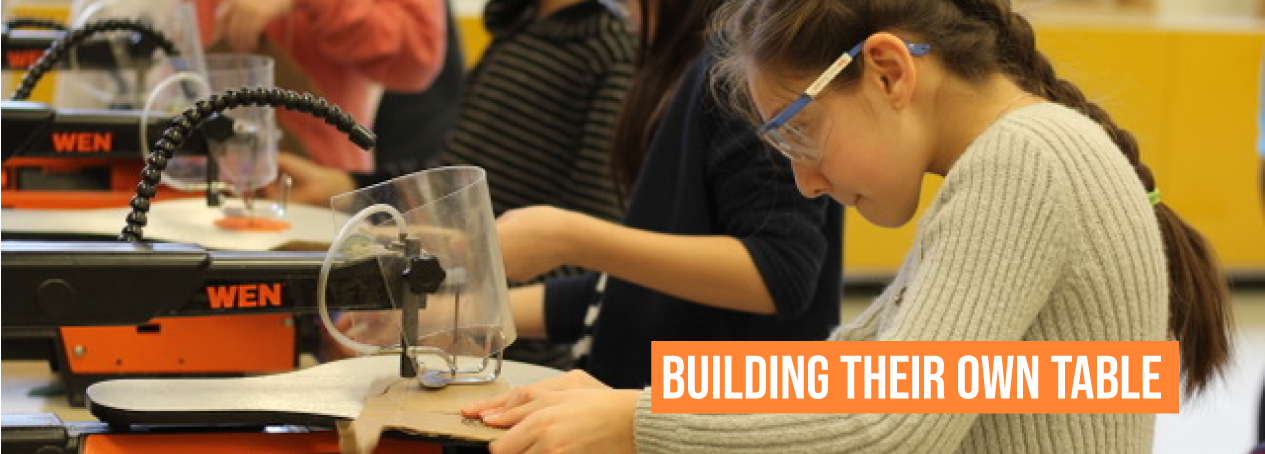
“Has anyone ever underestimated you?”
That was the question asked by a ten-year-old girl at our Maker Girls event the other night. She was asking this of five IF/THEN Ambassadors, women STEM leaders who’ve committed to serving as role models for young girls. Cancer immunologist Danielle Twum answered, “I take that underestimation and make it my superpower.” She went on to say, “If there’s no seat at the table, build your own table.”
Building your own table is not always so easy to do. And while there many amazing and talented women who are up for the challenge, way too many girls drop out of STEM fields before they have a chance to start building. As we close out Women’s History Month, we need to examine why women are so underrepresented in STEM — and more importantly, why it matters.
Even though they take as many high level math and science classes as boys — and perform equally well — girls enter STEM fields at dramatically lower rates. According to the U.S. Census Bureau, “Women working in engineering occupations increased from 3% in 1970 to 15% in 2019. And while the percentage of women in computer occupations is higher than in 1970, it actually decreased between 1990 and 2019.”
What does this mean for women? Lower salaries for one (STEM jobs tend to pay more). It also means technologies and innovations are being designed without women in mind. One prominent example is the larger number of women who die from heart disease because researchers only studied the effects of the disease on men — meaning the dearth of women in STEM could literally be the difference between life and death.
What does this mean for the rest of us? Well, it could also be the difference between life and death. Without women in STEM, society misses out on all of their potential innovations, including those which have a direct affect on health and well-being. Dr. Twum, the cancer immunologist and IF/THEN Ambassador from our Maker Girls event, puts it this way: “As a woman or girl you walk through the world seeing problems that most people overlook. So your contributions to those problems will change the world.” This is true for women as well as other groups who are traditionally underrepresented in STEM — and making sure they are active in STEM fields will increase the creativity and possibilities for scientific discovery exponentially. “The more people you surround yourself with who have different experiences, the better,” said Cori Lathan, another IF/THEN Ambassador and the founder of AnthroTronix, an engineering company that invents human-centered technology (and also my friend). “All of us think differently, and when we come together, we design better for everyone.”
So why are there so few girls in STEM? There are many reasons girls seem to retreat from STEM as they progress in their schooling. Primary among these is the lack of role models. In an article for Edutopia, Carly Berwick states, “In several studies, when children were asked to draw a mathematician or scientist, girls were twice as likely to draw men as they were to draw women, while boys almost universally drew men, often in a lab coat.” Without female role models, girls can’t imagine themselves in the jobs that make the biggest impact on our lives. That’s exactly what the IF/THEN Ambassadors seek to correct, and why we are so proud to be working with them on our Maker Girls initiative. Here, Dr. Twum has wise words again: “It’s important to have mentors. Whatever challenges you face, they can help you walk around it, or vault you so you can jump over it.”
There are other reasons girls shy away from STEM, including the unconscious biases of teachers, parents, and even girls themselves that subtly dissuade girls from pursuing STEM interests. One study from the American Psychology Association showed that merely telling women that men were expected to do better on a math test resulted in the women doing significantly worse on that test (conversely, when women were told there were no gender differences on the test, they did equally well to men). This is especially acute for girls of color.
In addition, most girls tend to become more engaged in STEM when collaborating and and solving problems that they see as relevant to the world. Traditional educational models (especially in math and science) don’t often meet these needs.
That’s why project-based maker learning has proven to be a great way to get girls excited about STEM. Assessments of our Invention Studio program back this up, with students showing measurable increases in STEM interest and engagement. In a series of studies recently published by the George Lucas Educational Foundation, project-based learning was directly linked with increased science achievement in elementary and middle school students.
Paramount to us at KID Museum is the knowledge that STEM skills, especially when coupled with “21st century” attributes like perseverance, collaboration, and critical thinking, are skills that last a lifetime — no matter what field a girl chooses to pursue. STEM skills prepare girls to take on life’s challenges — and make the world a better place.
And as for being underestimated? I’ll give Dr. Twum the last word: “You’d be amazed at how strong you are once you start to believe in yourself.”

